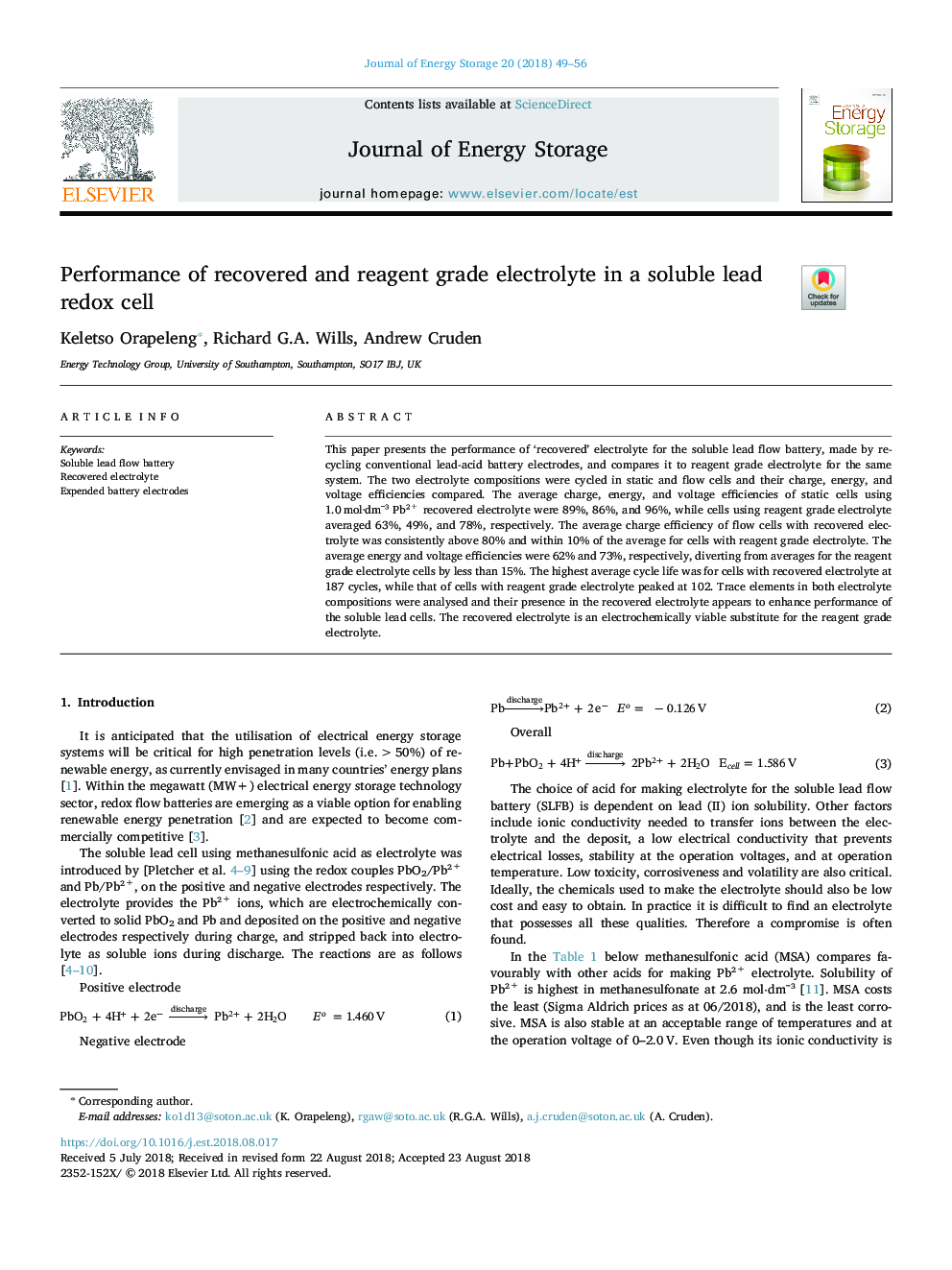| Article ID | Journal | Published Year | Pages | File Type |
|---|---|---|---|---|
| 10147220 | Journal of Energy Storage | 2018 | 8 Pages |
Abstract
This paper presents the performance of 'recovered' electrolyte for the soluble lead flow battery, made by recycling conventional lead-acid battery electrodes, and compares it to reagent grade electrolyte for the same system. The two electrolyte compositions were cycled in static and flow cells and their charge, energy, and voltage efficiencies compared. The average charge, energy, and voltage efficiencies of static cells using 1.0âmol·dm¯³ Pb²+ recovered electrolyte were 89%, 86%, and 96%, while cells using reagent grade electrolyte averaged 63%, 49%, and 78%, respectively. The average charge efficiency of flow cells with recovered electrolyte was consistently above 80% and within 10% of the average for cells with reagent grade electrolyte. The average energy and voltage efficiencies were 62% and 73%, respectively, diverting from averages for the reagent grade electrolyte cells by less than 15%. The highest average cycle life was for cells with recovered electrolyte at 187 cycles, while that of cells with reagent grade electrolyte peaked at 102. Trace elements in both electrolyte compositions were analysed and their presence in the recovered electrolyte appears to enhance performance of the soluble lead cells. The recovered electrolyte is an electrochemically viable substitute for the reagent grade electrolyte.
Related Topics
Physical Sciences and Engineering
Energy
Energy (General)
Authors
Keletso Orapeleng, Richard G.A. Wills, Andrew Cruden,
